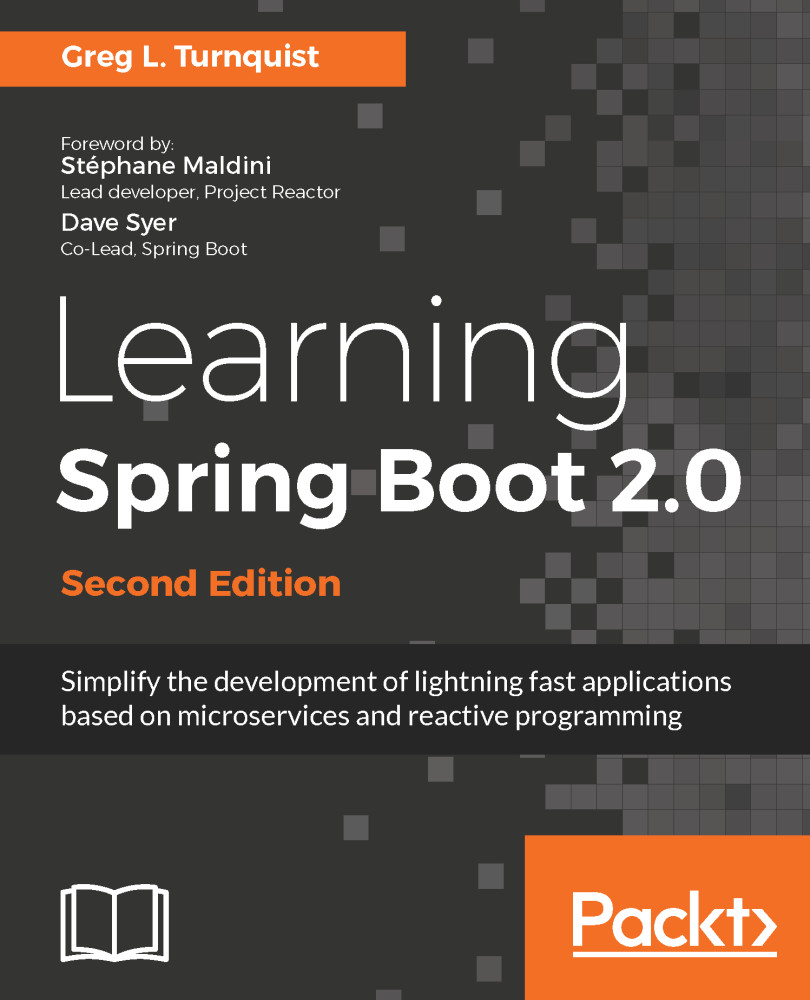The more and more I use #SpringBoot the more I like it.
– Derek Stainer @dstainer
In the previous chapter, we saw how quickly an application can be created with just a few lines of code. In this chapter, we are going to embark upon a journey. We will build a social media application where users can upload pictures and write comments.
In this chapter, we will build the web layer for our social media application doing the following:
- Creating a reactive web application with Spring Initializr
- Learning the tenets of reactive programming
- Introducing Reactor types
- Switching from Apache Tomcat to Embedded Netty
- Comparing reactive Spring WebFlux against classic Spring MVC
- Showing some Mono/Flux-based endpoints
- Creating a reactive ImageService
- Creating a reactive file controller
- Showing how to interact with a Thymeleaf template
- Illustrating how going...



